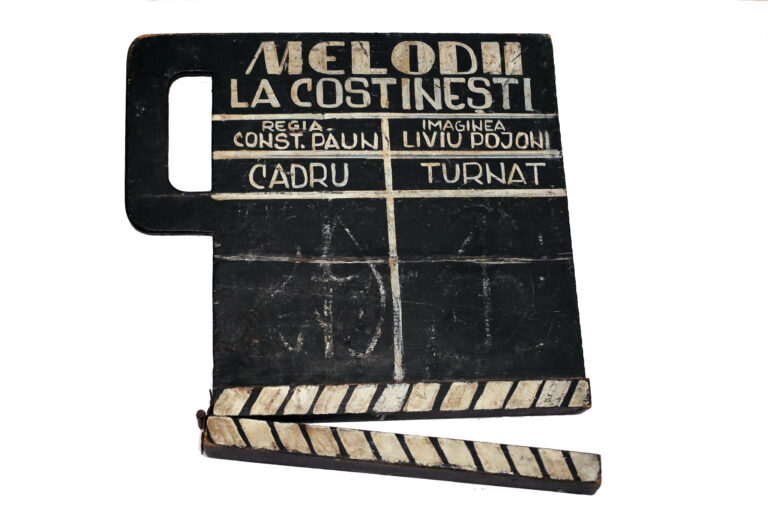
“Melodii la Costinesti ” was a movie produced in 1982, with many of that time famous Romanian actors. It also has live footage from the concert of some of the top Romanian bands at that time. It was shortly after its premiere withdrawn from the cinemas, at the request of Elena Ceausescu, the wife of the Romanian Dictator, because she was convinced that the movie is mocking her older son, Nicu, who was renowned for his extravagant nightlife and parties.
In the 1980s, and especially towards the end of the 1980s, one of the few places where nonconformism could still manifest itself for a few months a year was the village of Costinești, which had been transformed in the 1960s into a summer youth resort.
Thanks to the existence of Radio Vacanța Costinești, the stays in this resort have become during the 1980s a social phenomenon without comparison in Romania and an epitome of the alternative culture of the young generation.
The clapperboard is also a sturdy and no-nonsense piece of equipment that, out of context, could seem mundane. Yet, through cinema’s sometimes solipsistic gaze and intense love affair with itself, the clapperboard has become a piece of equipment that is familiar to audiences who have never been and may never be near a film set. It has become an iconic representation of the hopes and dreams of filmmakers everywhere. It has come to represent the key moment that the entire crew’s efforts will be captured on film. In and of itself, it is an object which has acquired a dynamic tension. How many takes will be necessary to capture the filmmakers’ vision? Will any of them be good enough to capture the audience’s attention, long enough for them to suspend disbelief and enter into the illusion created by all this hard work and machinery? The clapperboard is a simple and key piece of machinery in the dream factory. Its inclusion in this exhibition is a nod to the timeless connection between audiences and filmmakers. – Mary Kate O’Flanagan, curator
